
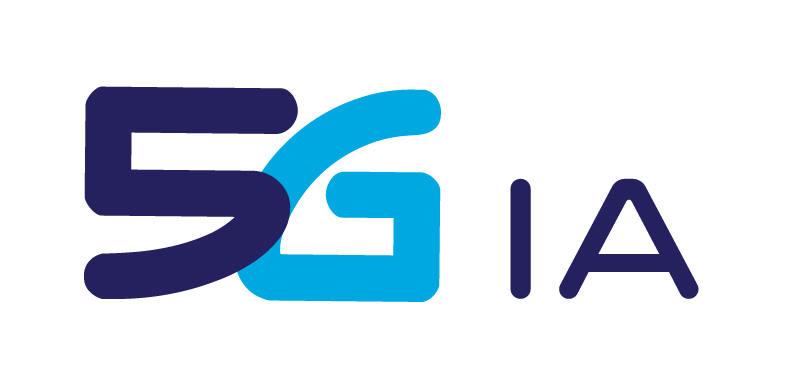
- About us
- Getting Involved
- Plans & Papers
- Events
- European 5G Activities
- Media & News
- Contact
Experience the future of 5G now
Where to find the 13 latest 5G-PPP demos during your visit to MWC-2019:
Three 5G-PPP Demos on the 5G-IA stand 7K17:
5G-MEDIA: Ultra High Definition (UHD) over Content Delivery Network
5G Media will display![]() their programmable platform in the context of “Ultra High Definition (UHD) over Content Delivery Network”. This enables Media Service Providers (MSPs) to build flexible and adaptable media distribution service chains—made up of virtualized functions—and deliver UHD media content while users are moving in a geographically distributed 5G network.
their programmable platform in the context of “Ultra High Definition (UHD) over Content Delivery Network”. This enables Media Service Providers (MSPs) to build flexible and adaptable media distribution service chains—made up of virtualized functions—and deliver UHD media content while users are moving in a geographically distributed 5G network.
5G-MoNArch: Smart Sea Port
5G-MoNArch will show t he Smart Sea Port testbed in Hamburg and allow visitors to: (a) perform full slice lifecycle management in the live testbed, (b) see the impact of slice configuration on network quality and QoS, (c) see live data from the use cases as implemented in the port control centre, including pollution control data from sensors on moving barges, and control information from the traffic light, (d) see real-time monitoring information from the testbed’s network (e.g. radio KPIs, E2E latency).
he Smart Sea Port testbed in Hamburg and allow visitors to: (a) perform full slice lifecycle management in the live testbed, (b) see the impact of slice configuration on network quality and QoS, (c) see live data from the use cases as implemented in the port control centre, including pollution control data from sensors on moving barges, and control information from the traffic light, (d) see real-time monitoring information from the testbed’s network (e.g. radio KPIs, E2E latency).
ONE5G: Serving megacities and industrial areas through 5G technologies
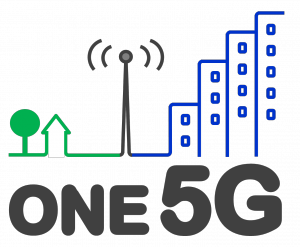 ONE5G will demonstrate how 5G technologies can support network requirements in two challenging environments: industrial areas with large factories, and highly populated areas (“megacities”). Specifically, we show: (a) small-cell 5G multi-connectivity for reliability enhancement in industrial environments, (b) E2E monitoring schemes based on the actual user quality of experience (QoE) as enablers for the future network management and optimisation in megacities, (c) slice negotiation and management functionalities.
ONE5G will demonstrate how 5G technologies can support network requirements in two challenging environments: industrial areas with large factories, and highly populated areas (“megacities”). Specifically, we show: (a) small-cell 5G multi-connectivity for reliability enhancement in industrial environments, (b) E2E monitoring schemes based on the actual user quality of experience (QoE) as enablers for the future network management and optimisation in megacities, (c) slice negotiation and management functionalities.
Five 5G-PPP Demos on the 5GBARCELONA/MWCapital stand: Hall Congress Square, CS40:
5GCity: Neutral Hosting and Video Acquisition & Production
 5GCITY will demo their Neutral Hosting solution along with a media-related use case called “Video Acquisition & Production”. This shows how the 5GCity neutral host platform can enable an ICT infrastructure owner to slice and lease its infrastructure to a 3rd party. The service acquires multiple, high-quality live videos from the event and uses Wi-Fi to stream them through the platform to a designated cloud-based application. Supported by 5G, this type of service can revolutionise, for example, how journalists work, since it allows them to immediately deliver content, on the move, to audiences. Moreover, such services can also support the public’s engagement in media production for big events.
5GCITY will demo their Neutral Hosting solution along with a media-related use case called “Video Acquisition & Production”. This shows how the 5GCity neutral host platform can enable an ICT infrastructure owner to slice and lease its infrastructure to a 3rd party. The service acquires multiple, high-quality live videos from the event and uses Wi-Fi to stream them through the platform to a designated cloud-based application. Supported by 5G, this type of service can revolutionise, for example, how journalists work, since it allows them to immediately deliver content, on the move, to audiences. Moreover, such services can also support the public’s engagement in media production for big events.
MATILDA: Public Protection and Disaster Relief
 MATILDA will present the 5G PPDR demo which showcases automated deployment, high availability, and the vertical and horizontal scalability of a 5G-ready emergency response application. The solution is provided with the iMON product suite designed for real-time intervention monitoring. The suite offers public safety agencies modular communications capabilities, a common operational picture (COP) in real time, and a suite of IoT-supported intervention management tools with on-site sensing and user or asset tracking capabilities.
MATILDA will present the 5G PPDR demo which showcases automated deployment, high availability, and the vertical and horizontal scalability of a 5G-ready emergency response application. The solution is provided with the iMON product suite designed for real-time intervention monitoring. The suite offers public safety agencies modular communications capabilities, a common operational picture (COP) in real time, and a suite of IoT-supported intervention management tools with on-site sensing and user or asset tracking capabilities.
5GTANGO: Communications and immersive media
![]() The 5Gtango communications demo shows all the steps needed to deploy a collaboration system for real-time communications over our NFV Platform. In just a few minutes with almost no effort, the final services provide advanced collaborative features such as multi-conference, screen sharing and whiteboard. The immersive media demo shows how 5G networks will enhance the experience of end-users regarding media services by improving their immersiveness into multiple 360º and non-360º video streams and the integration of their social media channels. This will allow, for example, end-users to enjoy sports events in a new dimension.
The 5Gtango communications demo shows all the steps needed to deploy a collaboration system for real-time communications over our NFV Platform. In just a few minutes with almost no effort, the final services provide advanced collaborative features such as multi-conference, screen sharing and whiteboard. The immersive media demo shows how 5G networks will enhance the experience of end-users regarding media services by improving their immersiveness into multiple 360º and non-360º video streams and the integration of their social media channels. This will allow, for example, end-users to enjoy sports events in a new dimension.
5GCAR: Lane Merge, See Through, Vulnerable Road User
 5GCAR will capture the integration process and illustrate a pre-demonstration presentation as a teaser for the final project event planned mid-2019. We show: Lane Merge – sharing local awareness and driving intentions, and negotiates the planned trajectories for coordinated lane merge; See Through – perception extension built on the basis of exchanging data from different sources to detect objects and vehicles in the non-line of sight; Vulnerable Road User – exchanging information on detecting the presence of road users with increased positioning accuracy.
5GCAR will capture the integration process and illustrate a pre-demonstration presentation as a teaser for the final project event planned mid-2019. We show: Lane Merge – sharing local awareness and driving intentions, and negotiates the planned trajectories for coordinated lane merge; See Through – perception extension built on the basis of exchanging data from different sources to detect objects and vehicles in the non-line of sight; Vulnerable Road User – exchanging information on detecting the presence of road users with increased positioning accuracy.
5GCroCo: Tele-operated Driving, HD Maps, Collision Avoidance
5GCroCo will dem![]() o three use cases: a) Tele-Operated Driving; b) High Definition Maps for enabling autonomous driving; c) Anticipated Cooperative Collision Avoidance. These use cases will be validated by conducting three types of validation trials: 1) Large scale trials in the Metz-Merzig-Luxembourg Cross-Border Corridor aiming at localized validation of 5G in the cross-border areas; 2) Large scale trials along the entire corridor, validating 5G technologies in significant trams of the highway, also including cross-border scenarios; 3) Small scale trials located in geographically distributed locations.
o three use cases: a) Tele-Operated Driving; b) High Definition Maps for enabling autonomous driving; c) Anticipated Cooperative Collision Avoidance. These use cases will be validated by conducting three types of validation trials: 1) Large scale trials in the Metz-Merzig-Luxembourg Cross-Border Corridor aiming at localized validation of 5G in the cross-border areas; 2) Large scale trials along the entire corridor, validating 5G technologies in significant trams of the highway, also including cross-border scenarios; 3) Small scale trials located in geographically distributed locations.
Five 5G-PPP demos on other Stands @MWC:
IoRL: Slot format and transmission
IoRL will display a propo sed 5G slot format and 5G transmission over the air link (light and radio) connecting the three essential components of the IoRL project (DRAN, RRLH Controller and User Terminal).
sed 5G slot format and 5G transmission over the air link (light and radio) connecting the three essential components of the IoRL project (DRAN, RRLH Controller and User Terminal).
STAND: RunEL, 5E41-9.
5G-Xcast: MBMS operation on Demand
5G-Xcast will sho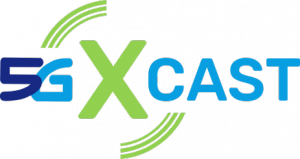 w the potential of 5G for media delivery: from traditional always-on linear TV services to on-demand streaming; from user-agnostic delivery to adaptive streaming to device capabilities; and, from fixed reception to users on the move. The demonstrator highlights the use of MooD (MBMS operation on Demand) to activate a broadcast delivery mode to cope with the demand of users getting connected to the same programme via unicast.
w the potential of 5G for media delivery: from traditional always-on linear TV services to on-demand streaming; from user-agnostic delivery to adaptive streaming to device capabilities; and, from fixed reception to users on the move. The demonstrator highlights the use of MooD (MBMS operation on Demand) to activate a broadcast delivery mode to cope with the demand of users getting connected to the same programme via unicast.
STAND: Enensys, 5B81
5G-CORAL: E2E 360° video streaming
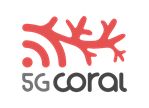 5G-CORAL will show E2E, 360-video streaming across three tiers of computing nodes (Low, medium and high ends) all under unified orchestration and control. Our demo comprises two 360 degrees cameras, each capturing a separate event in different areas of the booth, plus two terminals for two kinds of experience: one smartphone and one oculus rift (goggles). Our visitors will experience the automated deployment of the E2E video streaming and 360 video streaming from either camera location, at a fraction of the bandwidth.
5G-CORAL will show E2E, 360-video streaming across three tiers of computing nodes (Low, medium and high ends) all under unified orchestration and control. Our demo comprises two 360 degrees cameras, each capturing a separate event in different areas of the booth, plus two terminals for two kinds of experience: one smartphone and one oculus rift (goggles). Our visitors will experience the automated deployment of the E2E video streaming and 360 video streaming from either camera location, at a fraction of the bandwidth.
STAND: Advantage/5G-CORAL, 7C61
5G-PICTURE: Time-Sensitive Network
5G-PICTURE will pres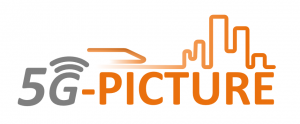 ent a slide-deck describing the time-sensitive network (TSN) for 5G converged front- and back-haul that ADVA and TransPacket are developing. The proposed solution leverages TransPacket’s FUSION deterministic delay technology for guaranteed service transport, and ADVA’s flexible G.metro DWDM optical layer. Such a solution is capable of low latency and timing accuracy for supporting the emerging 5G applications, which will be eventually showcased in the 5G smart city testbed in Bristol, UK.
ent a slide-deck describing the time-sensitive network (TSN) for 5G converged front- and back-haul that ADVA and TransPacket are developing. The proposed solution leverages TransPacket’s FUSION deterministic delay technology for guaranteed service transport, and ADVA’s flexible G.metro DWDM optical layer. Such a solution is capable of low latency and timing accuracy for supporting the emerging 5G applications, which will be eventually showcased in the 5G smart city testbed in Bristol, UK.
STAND: ADVA Optical Networking, 7H31
5G-TRANSFORMER: Deploying a containerized ns-3/LENA-based LTE mobile Network Service through the 5G-TRANSFORMER platform
![]() This demo presents an ongoing prototype implementation of the Service Orchestrator (SO) building block of the 5GTRANSFORMER (5GT) architecture. Within the 5GT-SO, we define the Service Manager (SM), which hosts the intelligence of the 5GT-SO and interacts with the other architectural blocks of the 5GT architecture through the defined APIs. The aim of defining the SM is to decouple the 5GT-SO implementation from the associated MANO platform (OSM in this case), allowing the interoperability with other MANO platforms, hence increasing the scope of the 5GT solution. In this demo, we will show how the current ongoing implementation of the 5GT-SO, using the SM, is able to automate the orchestration of both computing and networking resources to deploy a virtualized mobile network service based on ns-3/LENA network simulator/emulator in minutes over an emulated environment consisting of a multi-point of presence infrastructure connected by a custom transport network.
This demo presents an ongoing prototype implementation of the Service Orchestrator (SO) building block of the 5GTRANSFORMER (5GT) architecture. Within the 5GT-SO, we define the Service Manager (SM), which hosts the intelligence of the 5GT-SO and interacts with the other architectural blocks of the 5GT architecture through the defined APIs. The aim of defining the SM is to decouple the 5GT-SO implementation from the associated MANO platform (OSM in this case), allowing the interoperability with other MANO platforms, hence increasing the scope of the 5GT solution. In this demo, we will show how the current ongoing implementation of the 5GT-SO, using the SM, is able to automate the orchestration of both computing and networking resources to deploy a virtualized mobile network service based on ns-3/LENA network simulator/emulator in minutes over an emulated environment consisting of a multi-point of presence infrastructure connected by a custom transport network.
STAND: CTTC, Congress Square CS20, Booth 13





